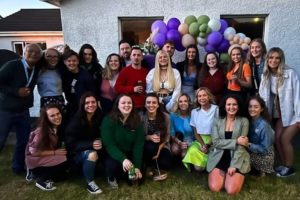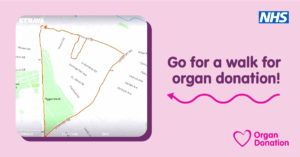Full marks this week for the Specialist Nurses for Organ Donation (SNODs) at Addenbrooke’s Hospital, an internationally renowned transplant centre in Cambridge. They made their mark on the back of the city’s buses. A clear message, on that bright pink background: “Waiting in traffic is frustrating…but waiting for a transplant is worse.”

That transplant list is a complex queue, not like many we may be more familiar with where we simply wait patiently (more or less) for our turn to come. Inching closer to the front. Ten people to go. Nine. Eight. Seven, six, nearly there… This queue doesn’t work like that.
Diagnosed with a form of organ failure, or chronic illness, a patient is assessed by the medical team who may consider a transplant necessary. Once on the active list, the patient doesn’t just get a number and wait their turn. Time on the list doesn’t dominate the decision-making criteria. It depends on many things.
Which organ, or organs, do they need? Age, size, weight, physical condition, blood type, and many more complex medical factors are all taken into consideration. How long may they be able to wait? Are they in acute organ failure or managing a chronic illness? It may be considered better to “pass” some options for an organ if they are strong enough to wait a little longer for a “better match” to come. They may be on a super-urgent list where the medical team, as always, take the utmost care for the most perfect match possible, but with little time to wait.
And patients on the active list aren’t just waiting. They are doing their best to remain as fit and strong as possible in readiness for the work to come. If health dips too far they may need to be taken off the active list until they regain strength, enough to have the best possible chance to respond through the intensity of the transplant process and into a steady recovery.
And so it goes on. A serious game of snakes and ladders, played in a blindfold. Lives placed on hold, knowing little about how the list is progressing. The calendar moves on, but they may not seem much closer now than they were. Waiting for the phone to ring, grab-bag at the ready…
There may be a false alarm, or two, or more. A call to the transplant centre in faith that a suitable organ may be available only to find, on admission to the ward, even preparing for theatre, that on further investigation all is not as hoped and the transplant can’t go ahead. Still on the list. Still waiting. Hoping…
Only 1% of deaths are in circumstances where organ donation may be considered.
The protocols for considering the suitability of a recipient, of the potential donor organ, and how an organ may be offered and to whom, are long, detailed and complex. The policy for the “distribution and allocation” of deceased donor livers is 24 pages long. It was revised in January 2022 by the Organ and Tissue Donation and Transplantation Clinical Audit Risk and Effectiveness Group (OTDT CARE), and will be reviewed annually.
When a potential donor organ is available, complex decisions are made within a short space of time. If an organ is offered, and not deemed suitable, it may be offered for another patient. There are only a few hours available for a successful process.
Patients and their families, and most of the other people involved, are spared these details. It sits with the medical teams, then the SNODs and their colleagues. But somewhere in the picture is a patient, waiting for a phone call inviting them to come to their transplant centre as quickly as possible, perhaps in a family car, ambulance, air taxi, or all three, blue lights and sirens when needed.
Somewhere else another family’s life turns inside out, changed in the blink of an eye. Unsuspecting, then plunged into the bright lights of Intensive Care, the persistent bleeping of medical monitors, and then to a quiet room and the news no one wanted to hear. Only when it is certain, absolutely, that the patient cannot recover, and the news is accepted by the accompanying family, only then can another conversation be approached about the possibility of organ donation.
When the family has had no conversations about organ donation and no knowledge of their loved one’s wishes, it can be much harder to be focused and confident enough to consider donation a positive choice. That 1% is reduced again. Whether the legal system requires us to opt in to be donors, or an opt out system considers us potential donors unless we have said no, no transplant can proceed without the clear consent of the family.
The list is long. Around 7,000 people across the UK waiting for that phone call. “Waiting in traffic is frustrating…but waiting for a transplant is worse.” A conversation about organ donation this week could make a difference…








 That pink shirt…
That pink shirt…